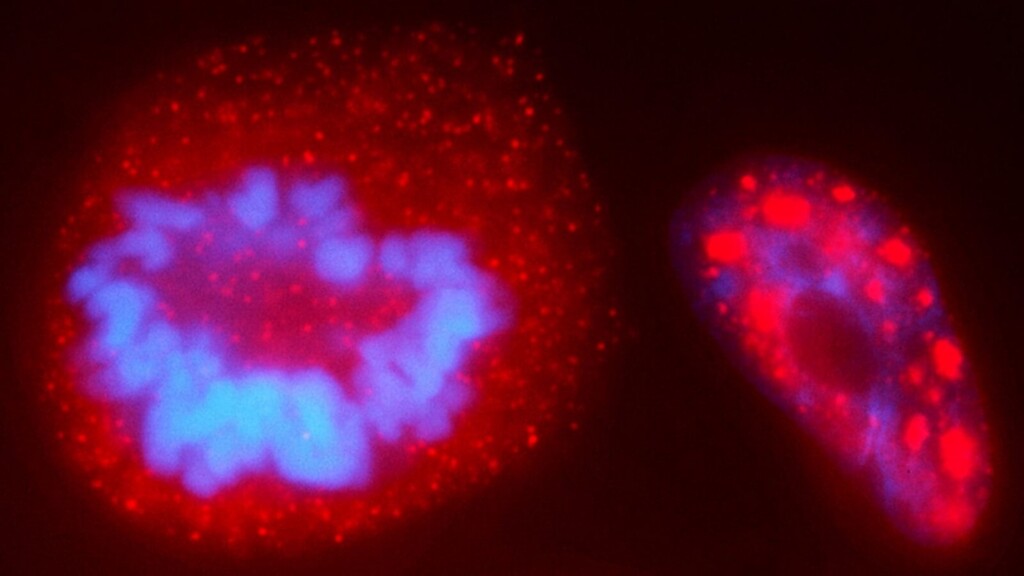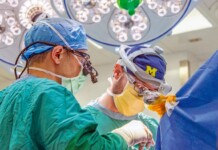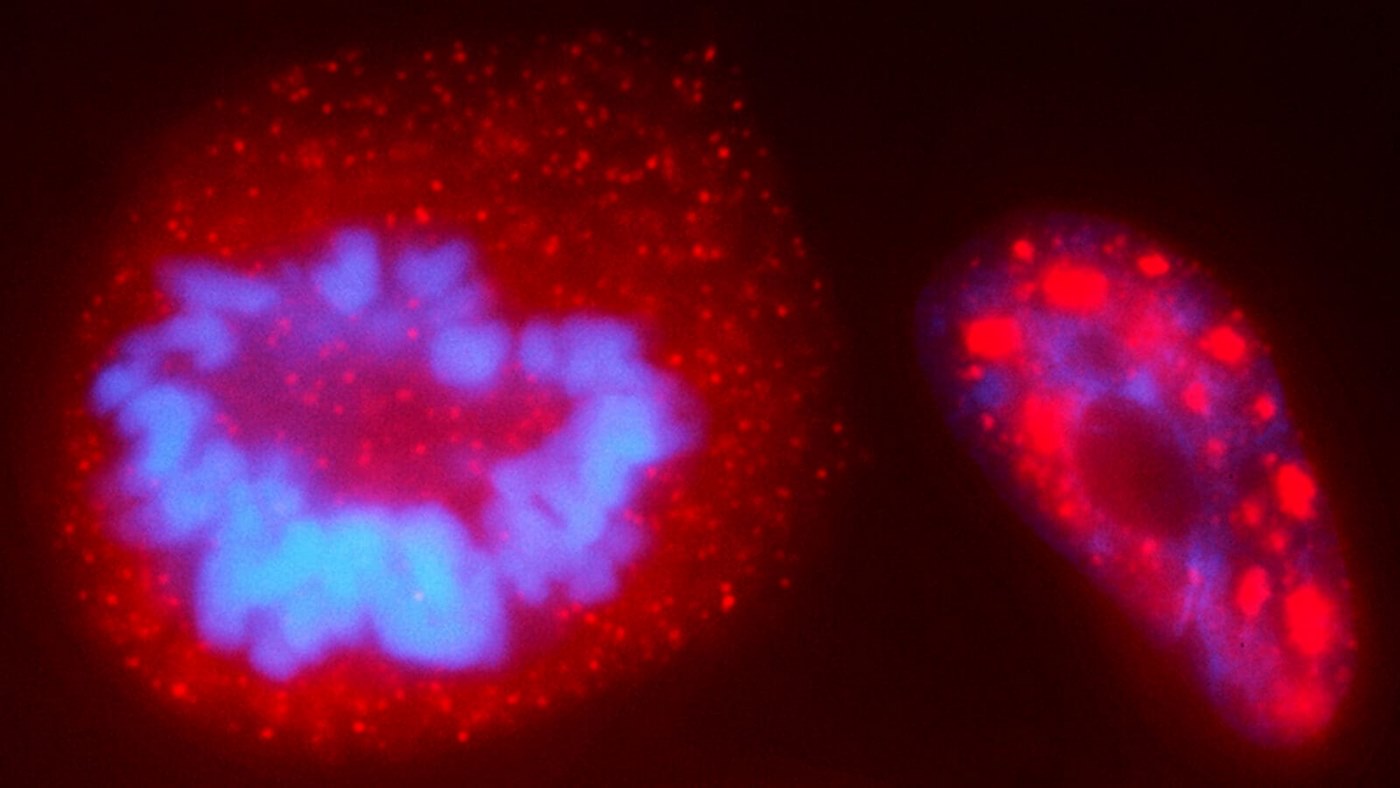
With the flick of a light, researchers have found a way to rearrange life’s basic tapestry, bending DNA strands back on themselves to reveal the material nature of the genome.
Scientists have long debated the physics of chromosomes—structures at the deepest interior of a cell that are made of long DNA strands tightly coiled around millions of proteins.
Do they behave more like a liquid, a solid, or something in between? Much progress in understanding and treating diseases like cancer depends on the answer.
A Princeton team has now developed a way to probe chromosomes and quantify their mechanical properties: how much force is required to move parts of a chromosome around and how well it snaps back to its original position.
According to their findings, the answer to the material question is that the chromosome acts in some ways like fluid, and in others with elasticity. By leveraging that insight in exacting detail, the team was able to physically manipulate DNA in new and precisely controlled ways.
“What’s happening here is truly incredible,” said Cliff Brangwynne, the director of Princeton’s Omenn-Darling Bioengineering Institute and principal investigator of the study. “We haven’t been able to have this precise control over nuclear organization on such quick timescales before.”
The key to the new method lies in the researchers’ ability to generate tiny liquid-like droplets within a cell’s nucleus. The droplets form like oil in water and grow larger when exposed to a specific wavelength of blue light. Because the droplets are initiated at a programmable protein—a modified version of the protein used in the gene-editing tool known as CRISPR—they can also attach the droplet to DNA in precise locations, targeting genes of interest.
With their ability to control this process using light, the team found a way to grow two droplets stuck to different sequences, merge the two droplets together, and finally shrink the resulting droplet, pulling the genes together as the droplet recedes. The entire process takes about 10 minutes.
Physically repositioning DNA in this way represents a completely new direction for engineering cells to improve health and could lead to new treatments for disease, according to the researchers. For example, they showed they could pull two distant genes toward each other until the genes touch. Established theory predicts this could lead to greater control over gene expression or gene regulation—life’s most fundamental processes.
In order to fit the human genome into each cell’s nucleus, DNA and the chromosomes they contain need to be tightly coiled. However, since DNA is both a carrier of information and a physical molecule, the cell needs to unfurl the tightly coiled parts of the DNA to copy its information and make proteins.
MORE GENETIC SCIENCE BREAKTHROUGHS: FDA Approves Drug That Targets Brain Cancer Gene Mutation That Could Delay Need for Radiation and Chemotherapy
The areas along the genome that are more likely to be expressed are less rigid physically and easier to open up. The areas that are silenced are physically more coiled and compact and therefore harder for the cell to open up and read, like an instruction manual that opens more easily to some pages than others.
To study chromatin in more detail, postdoctoral scholar Amy R. Strom and recently graduated Ph.D. student Yoonji Kim, built upon previous research from the Brangwynne lab that used laser light to create and fuse droplets together. In this new work, they utilized an additional component that attaches droplets to specific locations on the DNA strands and directs their movement quickly and precisely via surface tension-mediated forces also known as capillary forces, which Princeton researchers had suggested could be ubiquitous in living cells.
Previously, moving DNA like this relied on random interactions over a period of hours or even days. Now that they can move the strands around in a controlled way, they can start to look at whether the genes in their new positions are expressed differently. This is potentially important for furthering our understanding of the physical mechanisms and material science of gene expression.
Strom said that scientists have looked at the stiffness of the nucleus by poking at it from the outside and taking a measurement of the whole nucleus. Scientists can also look at one gene and see if it is turned on or off. But the space in between is not well understood.
LOOKING DOWN FURTHER AND FURTHER: Single Atom X-rayed For First Time in Breakthrough That Will ‘Transform the World’
“We can use this technology to build a map of what’s going on in there and better understand when things are disorganized like in cancer,” said Strom.
This new tool is poised to help researchers understand gene expression better, but it is not intended to edit the DNA. “Our tool does not actually cleave the DNA sequences like CRISPR does,” said Kim.
“CRISPR is really good for diseases that are related to the need to cut and actually change the DNA sequence,” said Strom. This technology could work for a different class of diseases, especially those related to protein imbalances such as cancer.
CRISPR NEWS: CRISPR Identifies Commonly Available Drug That Works as Cobra Venom Antidote
“If we can control the amount of expression by repositioning the gene, there is a potential future for something like our tool.”
They published their findings in the journal Cell on August 20th.
SHARE This Unprecedented Demonstration With Social Media…




















